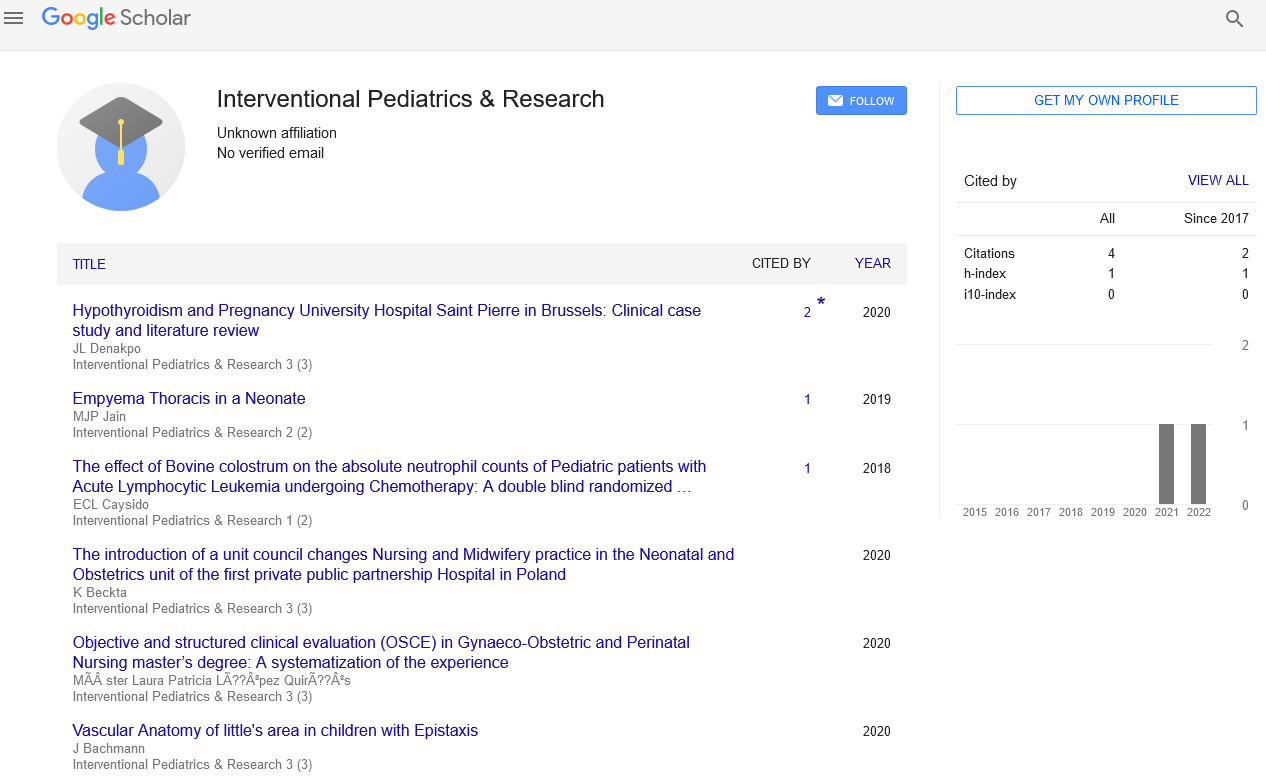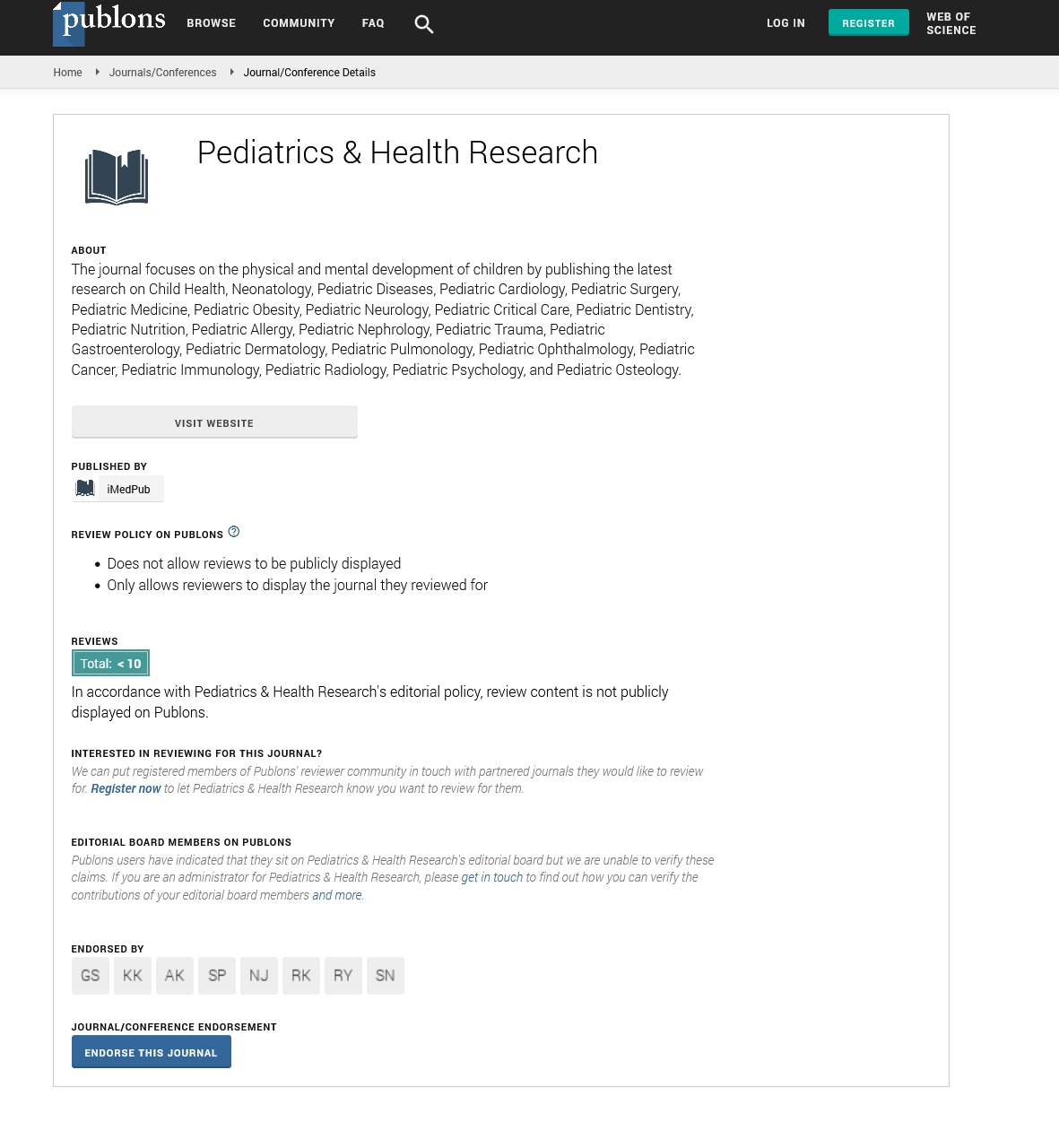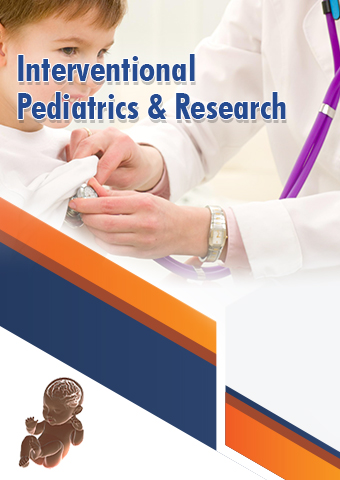Review Article - Interventional Pediatrics & Research (2023) Volume 6, Issue 1
The creation of vascular disease models for the purpose of investigating the pathogenesis and causation of rare vascular diseases.
Henry Ady*
Department of Interventional Pediatrics, Australia
Department of Interventional Pediatrics, Australia
E-mail: dennert_r8@gmail.com
Received: 30-Jan-2023, Manuscript No. ipdr-23-88263; Editor assigned: 01-Feb-2023, Pre-QC No. ipdr-23- 88263(PQ); Reviewed: 15-Feb-2023, QC No. ipdr-23-88263; Revised: 17- Feb-2023, Manuscript No. ipdr-23- 88263(R); Published: 24-Feb-2023, DOI: 10.37532/ipdr.2023.6(1).10-12
Abstract
The utility of rare monogenetic vascular disease modeling in this landscape is beginning to emerge as the medical field strives forward amid a new era of integrated technologies like bio printing and biological material development heralded by next-generation sequencing (NGS). These patient-specific models are at the forefront of modern personalized medicine because they are genetically simple and can be used for a wider range of applications. Rare vascular diseases account for a significant portion of the global burden of rare diseases on healthcare systems as a whole. The severity and chronic nature of the disease, as well as the lengthy diagnostic process that affects people of all ages, contribute to the disease’s high costs. Because of their complexity, sophisticated disease models and integrated strategies involving multidisciplinary teams are required.
Keywords
Rare vascular disease modeling • Monogenetic vascular disease • iPSC • Endothelia cell • Smooth muscle cell • Fibroblast • Vascular or ganoid
Introduction
The majority of the 6,000-8,000 rare diseases that have been identified are brought on by a single gene mutation. These monogenetic diseases typically have a severe phenotype, resulting in significant debilitation and a decreased quality of life [1]. The majority of them affect children and are typically fatal. The majority of rare diseases have no known cure or treatment, and their diagnosis typically requires a lengthy and costly investigation. The chronic and disabling nature of these diseases disproportionally consumes healthcare budgets, despite their individual rarity. Worldwide, cardiovascular disease is the leading cause of death, and within this category are numerous rare vascular diseases that, when taken together, contribute significantly to the burden [2]. The creation and application of patient-specific disease models is a novel and increasingly potent method for studying rare monogenetic vascular diseases in the modern era, when technologies that can assess whole genomes, transcriptase, biomes, and proteomes to accelerate biological discovery are available. In addition to addressing the elusive clinical challenges of these rare diseases, this strategy enables in-depth research into the disease-causing molecular mechanisms and phenotypes of more common vascular diseases [3]. Consequently, applying the knowledge gained from patients with rare vascular diseases to a significant portion of the global CVD population. Innovative research technologies are combined with novel application strategies in patient-specific vascular disease modeling [4]. The identification of genes with disease-causing alterations in rare disorders has significantly increased with the development of unbiased nextgeneration DNA sequencing, more specifically whole-genome sequencing. The difficulties posed by the diverse pathophysiology of rare vascular diseases can now be addressed in a more effective manner. These studies can be expanded to include unaffected relatives in the assessment of affected patients and contribute to the creation of a list of potential targets based on the severity, inheritance patterns, and population frequency of the disease [5]. Advanced vascular disease model platforms, such as vascular or ganoids (VOs), 3D printed blood vessel constructs, teratomas, and vascular grafts and patches for in vivo transplantation, can be developed using in vitro systems such as induced pluripotent stem cells (iPSCs) and primary cell lines, specifically fibroblasts from skin punches, which are relatively simple to obtain These models range from straightforward co-cultures and monocultures in two dimensions to intricate spherical or ganoids and vascular structures in four dimensions. Although in vitro models lack in vivo environmental factors, they do have significant advantages due to their inexpensive simplicity, potential unlimited or abundant supply, and malleability [6]. Due to their availability, ease of genome manipulation, accessibility, and cost, rodent models are typically used for in vivo vascular models. However, it is difficult to apply findings to human disease due to physiological differences in the cardiovascular systems of the mouse and rat models. As preclinical models, larger animal models like pigs, sheep, and non-human primates are seen as a better option for addressing these differences because their development makes them more applicable to human disease [7]. Ex vivo tissue has been the focus of some research programs due to the limitations of both in vitro and in vivo models. To study blood vessels without compromising their architecture, these models typically employ blood vessels isolated from animal or human tissue. When utilized appropriately, each of these models can be extremely useful tools for researchers, despite the fact that they each have their own advantages and disadvantages.
Materials and Methods
Vascular models made in vitro
Researchers have moved toward in vitro cell models as a more robust and reproducible system to investigate not only disease causation but also path mechanisms and drug discovery in the pursuit of developing vascular models that replicate human disease. In vitro cell models are an excellent candidate for rare vascular modeling due to their simplicity and affordability [8]. When these models are combined with the most recent NGS technology and cutting-edge platforms, in vitro cell models become an extremely powerful tool. Primary cells Due to the complexity of the cardiovascular system, numerous distinct cell types develop. The organ, adjacent cells, vessel structure, and environmental factors like shear stress, metabolism, gas exchange, and blood derivatives can all influence this array of cells. As a result, it is now crucial to look for cells that come from the environment that is most relevant to defining the disease’s pathology. In vitro cell model systems increasingly rely on primary cells isolated from human and animal tissues. Cardiomyocytes (CMs) and non-myocyte cells are typically utilized in vascular primary cell in vitro models for heart research [9]. In studies of blood vessels, the most important types of cells are endothelial (EC) and smooth muscle cells (SMCs), but there are also numerous other relevant cells like fibroblasts and immune cells that either interact with or influence these vascular cells. Due to their ability to replicate disease phenotypes, cultured primary fibroblasts have proven to be an effective and adaptable tool for the study of rare monogenetic vascular diseases. St. Helena and Others used primary fibroblasts to identify ecto-5-prime-nucleotidase (NT5E) mutations in patients with arterial calcifications caused by a lack of CD73 (ACDC), and then used these primary cells to further characterize the loss of function of the protein NT5E encodes in CD73. The enzyme CD73 converts adenosine and inorganic phosphate from extracellular AMP. Severe calcifications of the lower extremity arteries as well as the hand and foot capsules were found in a total of three patients from distinct families. The calcification and dysplasia that occurs in the medial portion of the arterial blood vessel wall distinguishes ACDC from conventional atherosclerotic vascular calcifications. Patients experience chronic and debilitating ischemic pain in their extremities as a result of this, which causes claudication of the calves, thighs, and buttocks. One family’s fibroblasts had significantly less NT5E RNA, CD73 protein expression, and enzyme activity. In addition, these studies revealed an accumulation of calcium phosphate crystals and elevated levels of alkaline phosphatase, both of which are characteristic features of ACDC. Alkaline phosphatase and calcium accumulation are reduced by genetic rescue studies and adenosine treatment [10]. A role for tissue non-specific alkaline phosphatase as an important mediator for pathological ectopic tissue calcification has been demonstrated in subsequent studies using ACDC patient-specific fibroblasts. An on-going ACDC clinical trial investigating the efficacy of the drug Etidronate, which was identified through the use of patient-specific disease modeling in drug screening studies, was sparked by the use of these patient-specific fibroblasts. Studies using these primary cells and other patient-specific models are on-going in parallel with this clinical trial to continue investigating the complex molecular path mechanisms of ACDC patients in the hopes of discovering additional effective treatments.
References
- Savoji H, Mohammadi MH, Rafatian N et al. Cardiovascular disease models: a game changing paradigm in drug discovery and screening. Biomaterials. 198, 3–26 (2019).
- Mensah GA, Roth GA, Fuster V. The global burden of cardiovascular diseases and risk factors: 2020 and beyond. J Am Coll Cardiol. 74, 2529–2532 (2019).
- Fernandez-Marmiesse A, Gouveia S, Couce ML. NGS technologies as a turning point in rare disease research, diagnosis and treatment. Curr Med Chem. 25, 404–432 (2018).
- Hood L, Tian Q. Systems approaches to biology and disease enable translational systems medicine. Genomics Proteomics Bioinformatics. 10, 181–185 (2012).
- Lippi M, Stadiotti I, Pompilio G et al. Human cell modeling for cardiovascular diseases. Int J Mol Sci. 21, 6388 (2020).
- Schuchardt M, Siegel NV, Babic M et al. A novel long-term ex vivo model for studying vascular calcification pathogenesis: the rat isolated-perfused aorta. J Vasc Res. 57, 46–52 (2020).
- Burger D, Touyz RM. Cellular biomarkers of endothelial health: micro particles, endothelial progenitor cells, and circulating endothelial cells. J Am Soc Hypertens. 6, 85–99 (2012).
- Farinacci M, Krahn T, Dinh W. Circulating endothelial cells as biomarker for cardiovascular diseases. Res pract thromb haemost. 3, 49–58 (2019).
- Harper RL, Maiolo S, Ward RJ et al. BMPR2-expressing bone marrow-derived endothelial-like progenitor cells alleviate pulmonary arterial hypertension in vivo. Respirology. 24, 1095–1103 (2019).
- Sen S, McDonald SP, Coates TP. Endothelial progenitor cells: novel biomarker and promising cell therapy for cardiovascular disease. Clin Science. 120, 263–283 (2011).
Indexed at, Google Scholar, Crossref
Indexed at, Google Scholar, Crossref
Indexed at, Google Scholar, Crossref
Indexed at, Google Scholar, Crossref
Indexed at, Google Scholar, Crossref
Indexed at, Google Scholar, Crossref
Indexed at, Google Scholar, Crossref
Indexed at, Google Scholar, Crossref
Indexed at, Google Scholar, Crossref


